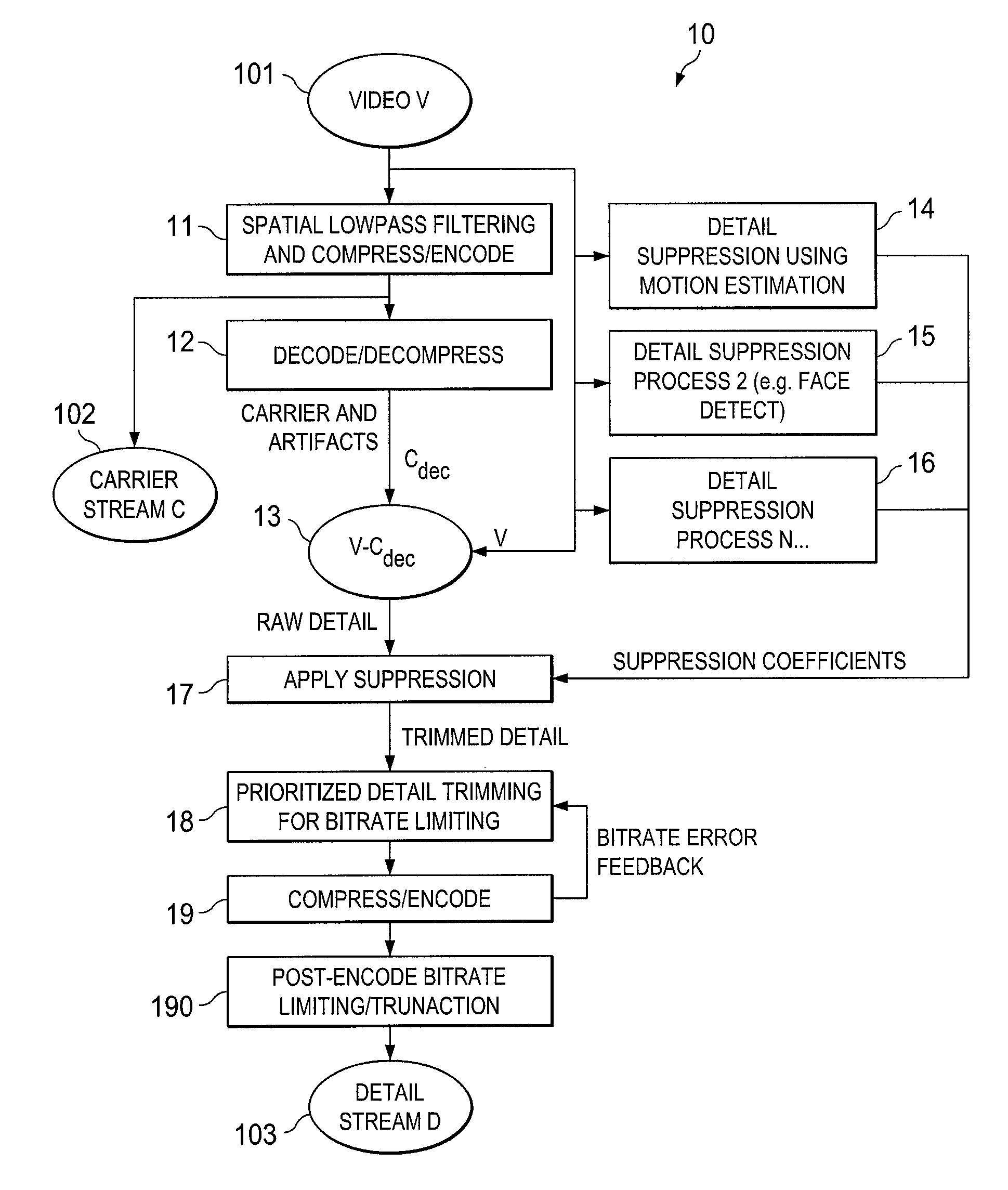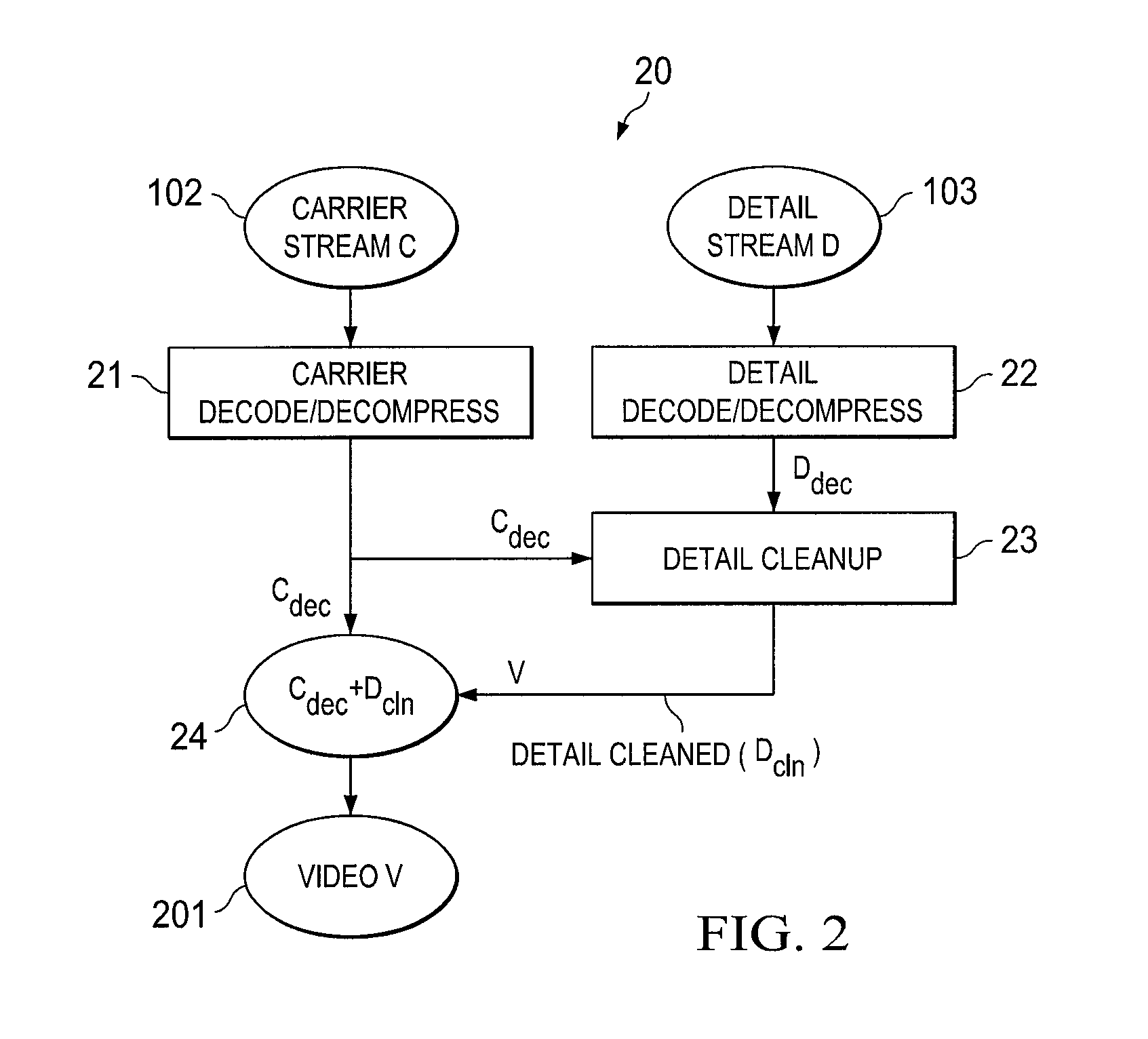Systems and methods for highly efficient video compression using selective retention of relevant visual detail
a video and detail retention technology, applied in the field of digital video signals, can solve the problems of video distortion, increased bandwidth control, and reduced overall memory required to store such movie files, and achieve the effects of improving compression efficiency, high perceptual quality of decompressed video, and improving bandwidth control
- Summary
- Abstract
- Description
- Claims
- Application Information
AI Technical Summary
Benefits of technology
Problems solved by technology
Method used
Image
Examples
Embodiment Construction
[0031]FIG. 1 shows one embodiment 10 of a method for encoding / compressing video frames according to the concepts discussed herein. This method can be used, by way of example, in system 30 shown in FIG. 3. Methods 10 and 20 can be, for example, software running in processors 32-1, 34-1, respectively. Also, the methods can be in firmware or ASICs if desired.
[0032]FIG. 1 illustrates an embodiment of a compression process which realizes the advantages described above, and which achieves important goals of an effective video transmission or storage system, including the use of very low bitrates for a given perceptual quality while maintaining a satisfactory image quality in low-bandwidth scenarios, The system has the capability of supporting precise single-pass control of compressed video stream bitrates while having robust handling of ‘difficult’ scenes such as high-motion, variable-motion, or chaotic video with a minimum of objectionable or distracting artifacts. The output of the comp...
PUM
 Login to View More
Login to View More Abstract
Description
Claims
Application Information
 Login to View More
Login to View More - R&D
- Intellectual Property
- Life Sciences
- Materials
- Tech Scout
- Unparalleled Data Quality
- Higher Quality Content
- 60% Fewer Hallucinations
Browse by: Latest US Patents, China's latest patents, Technical Efficacy Thesaurus, Application Domain, Technology Topic, Popular Technical Reports.
© 2025 PatSnap. All rights reserved.Legal|Privacy policy|Modern Slavery Act Transparency Statement|Sitemap|About US| Contact US: help@patsnap.com



